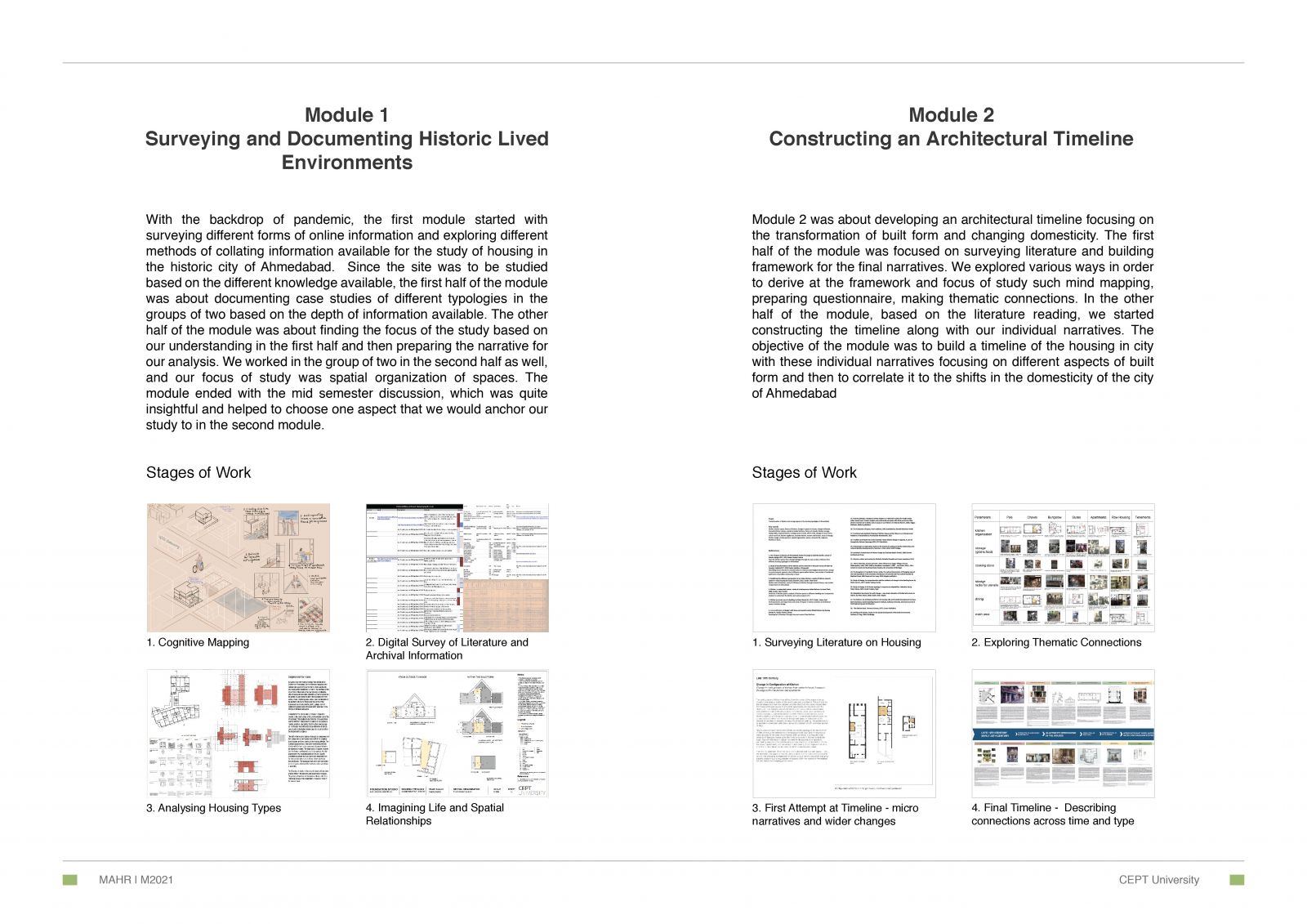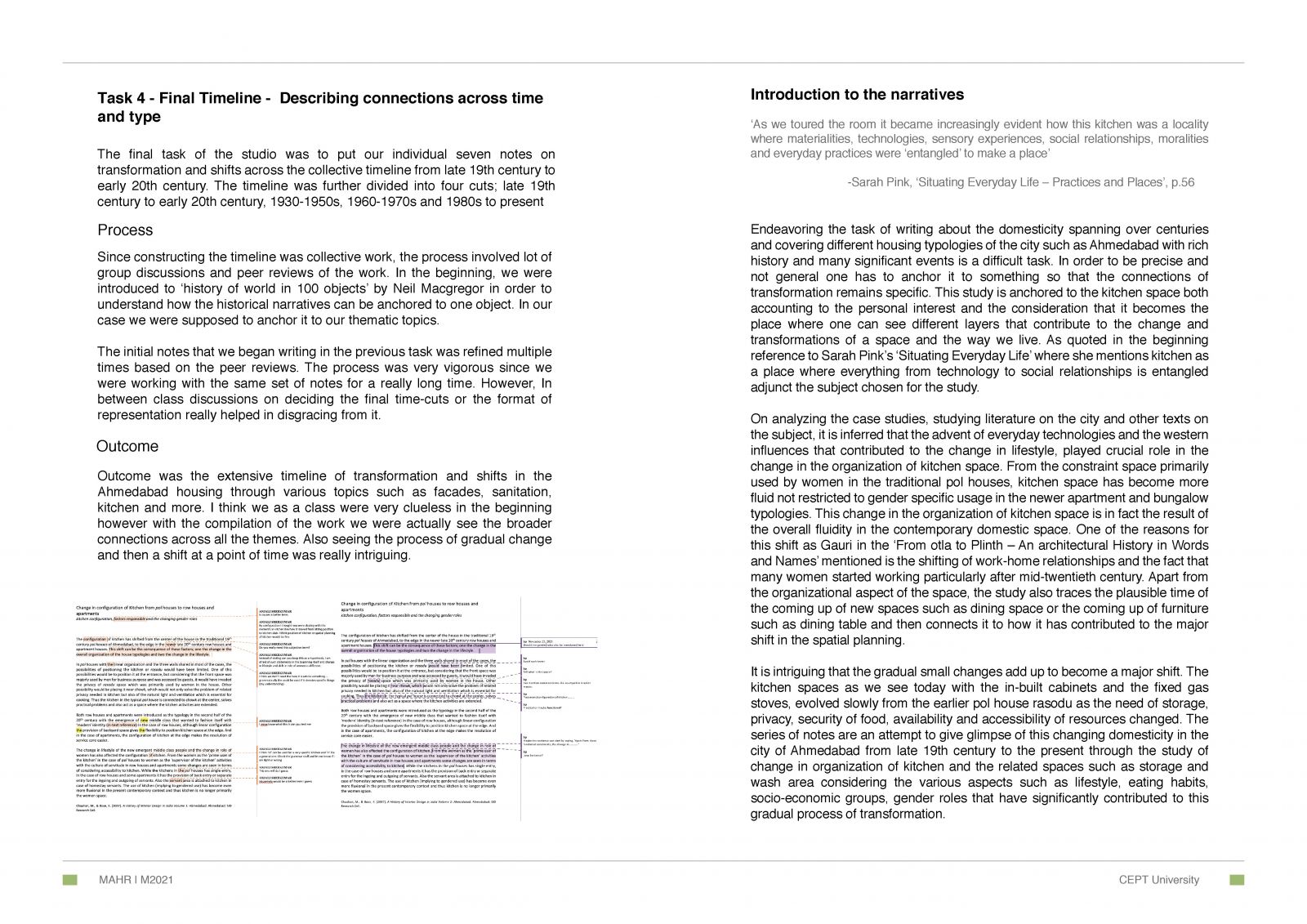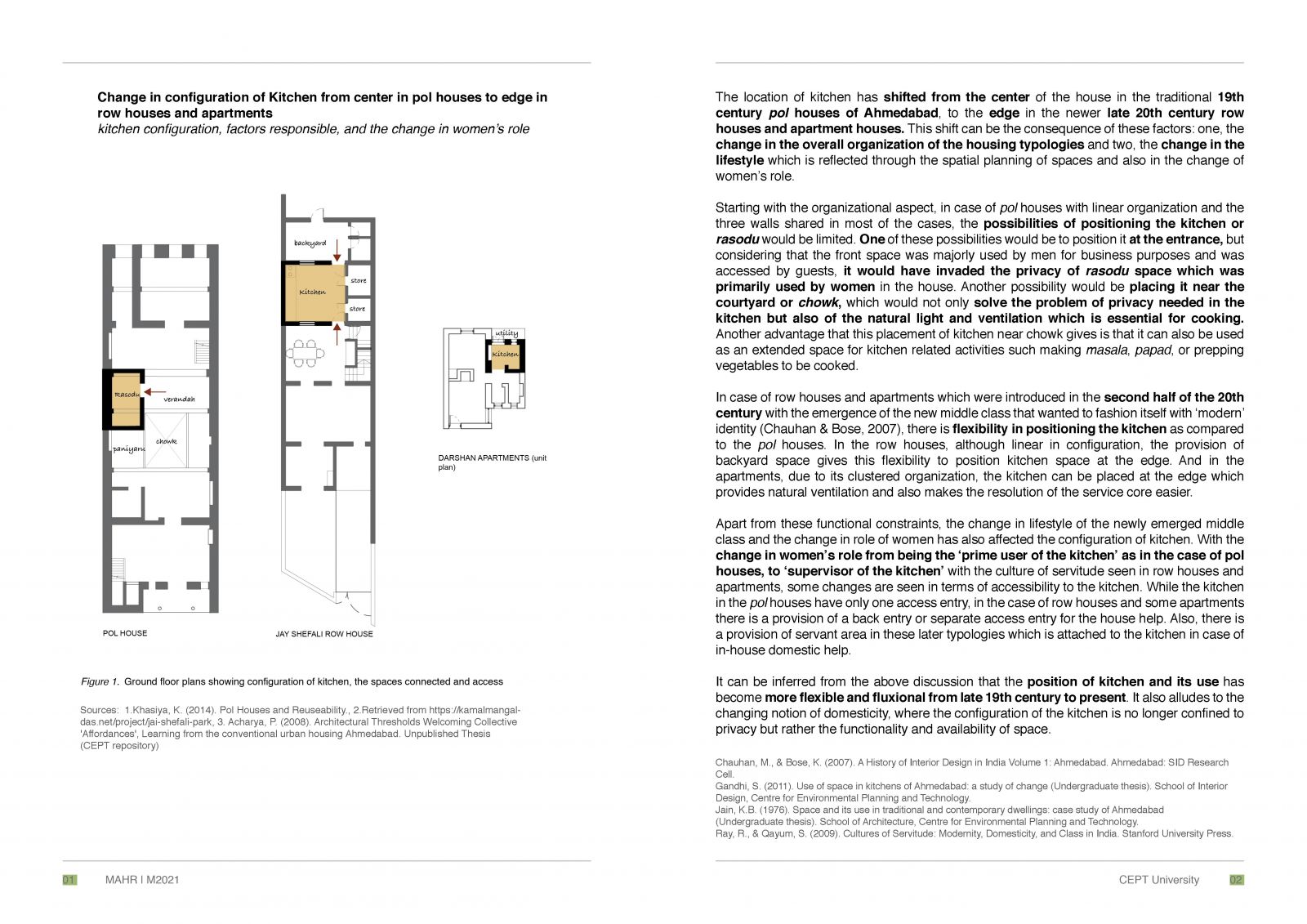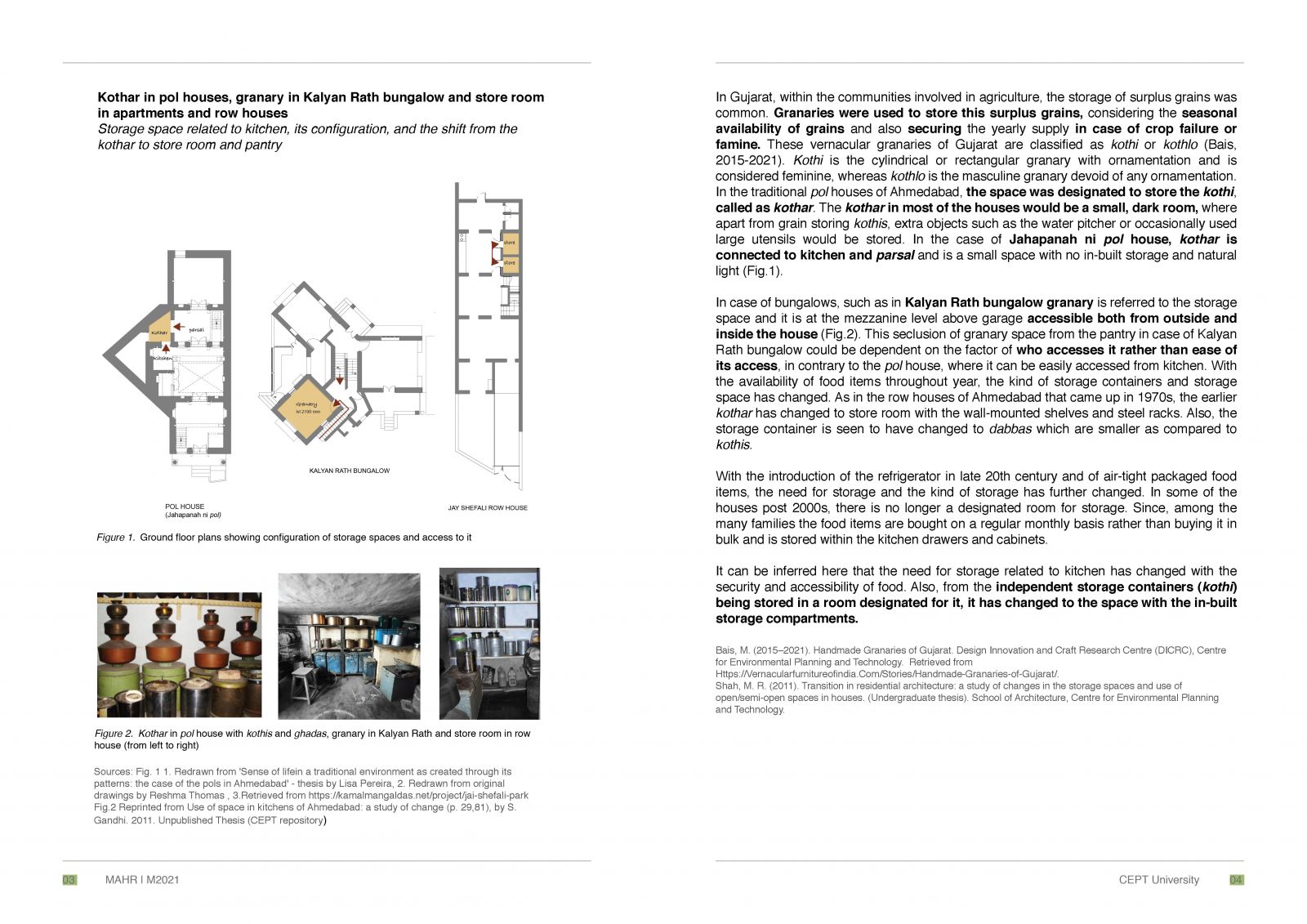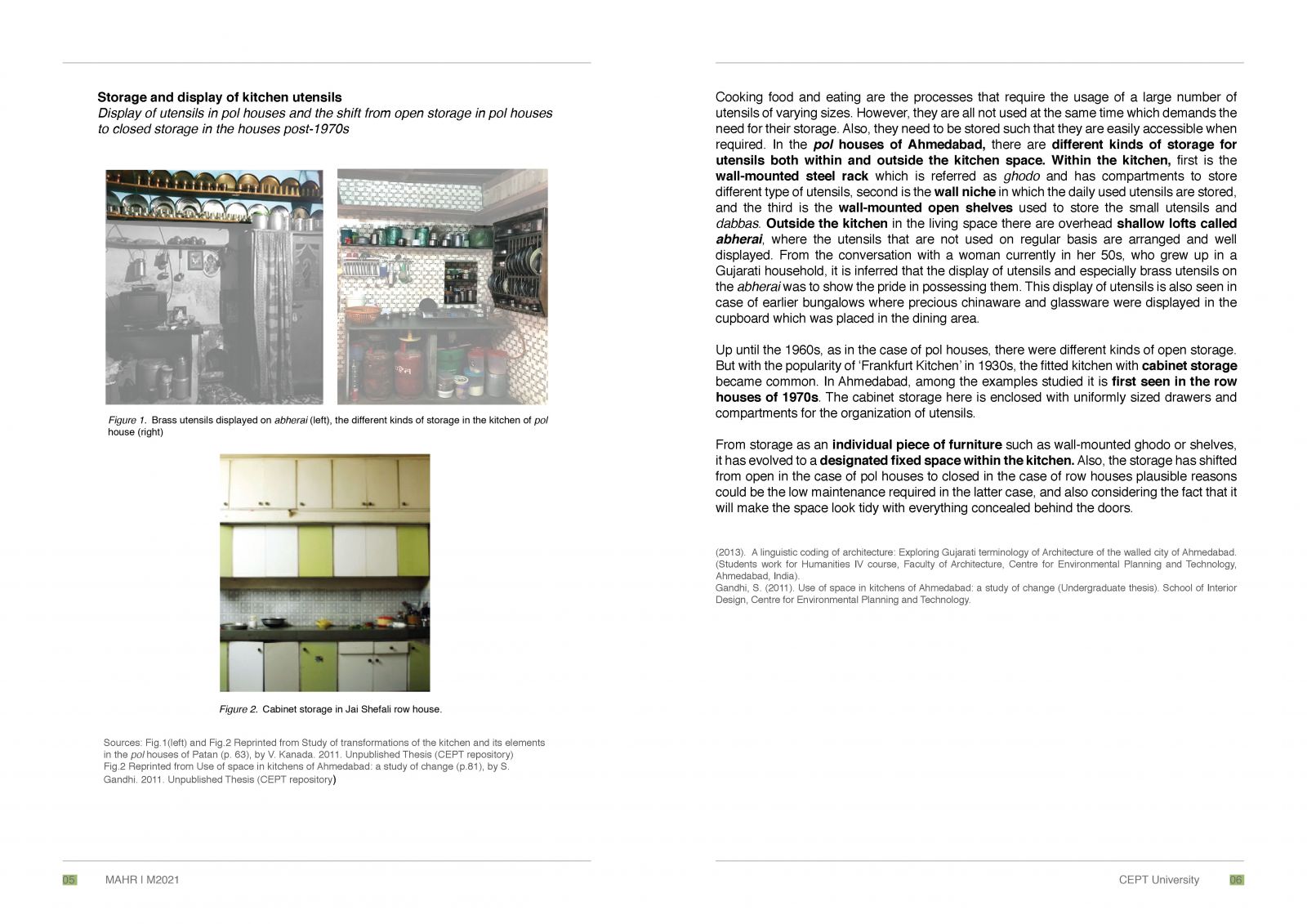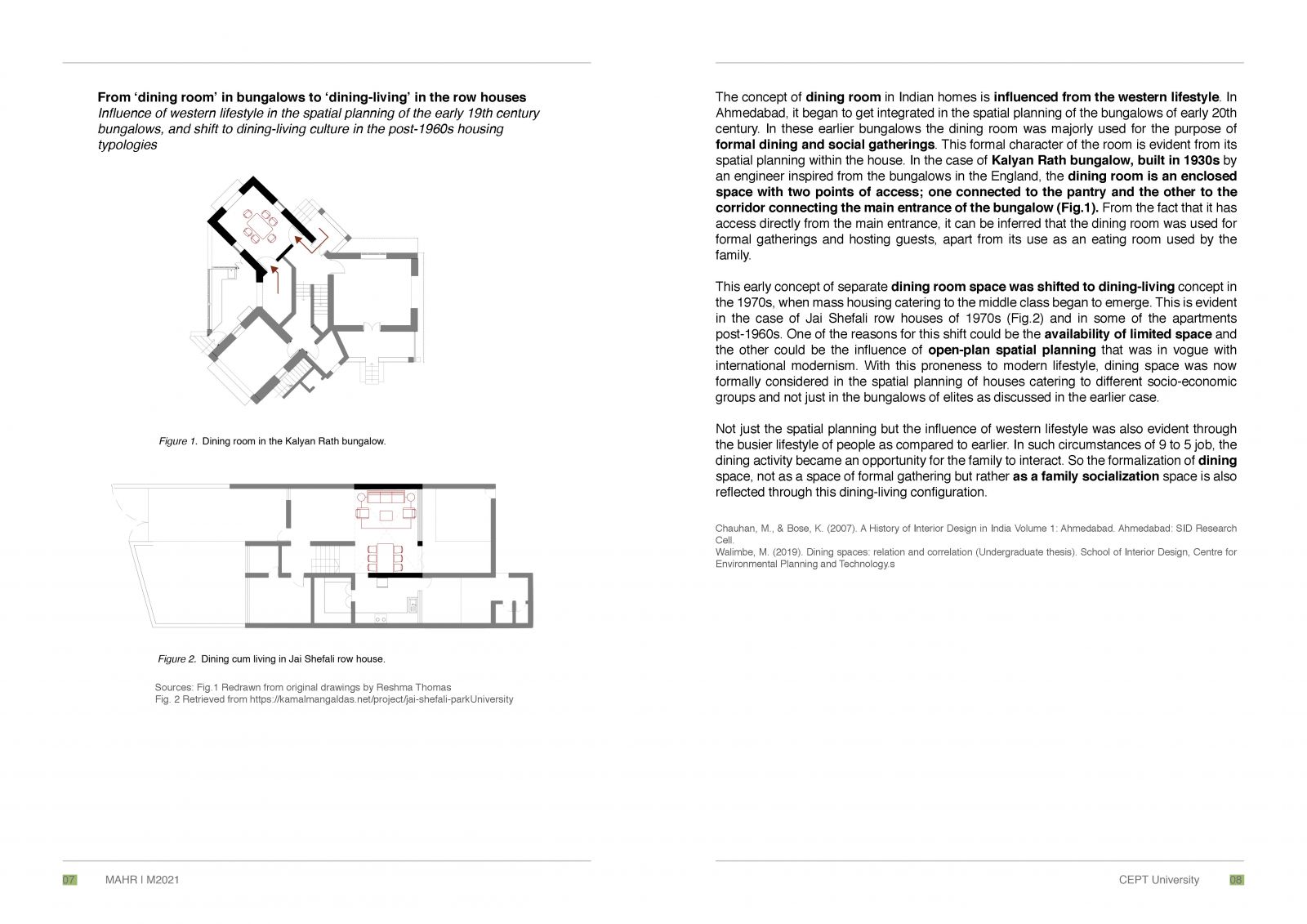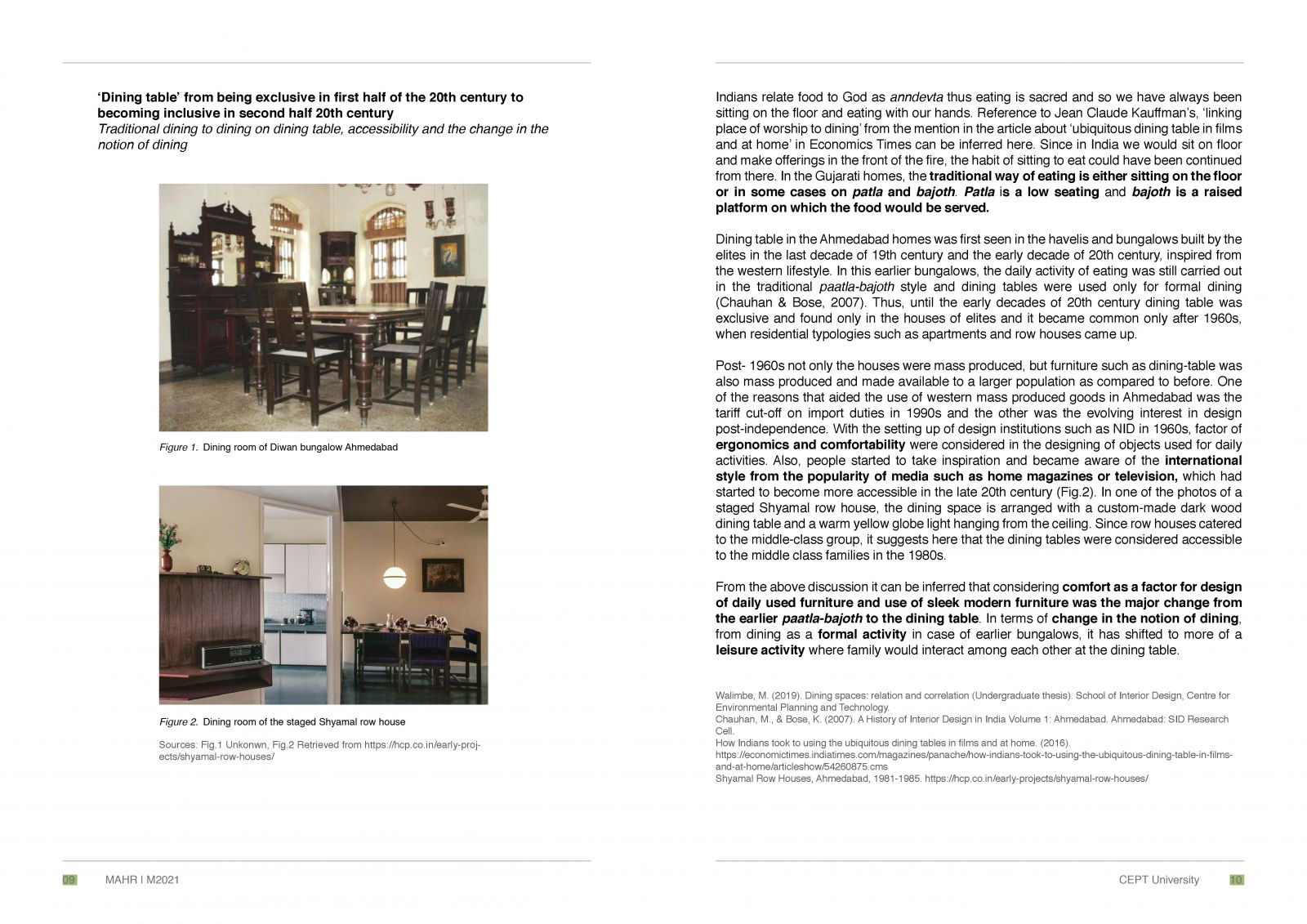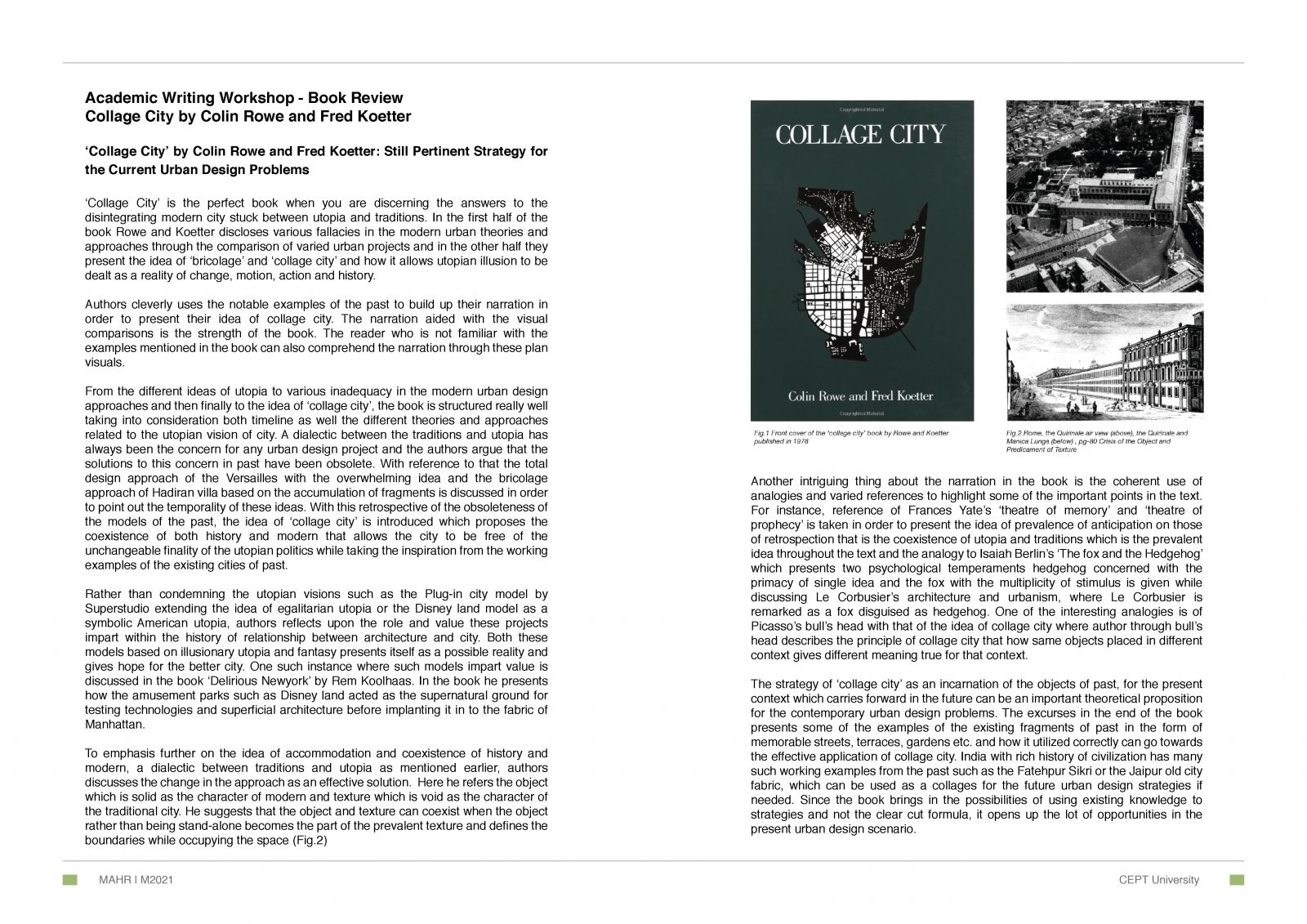Your browser is out-of-date!
For a richer surfing experience on our website, please update your browser. Update my browser now!
For a richer surfing experience on our website, please update your browser. Update my browser now!
Endeavoring the task of writing about the domesticity spanning over centuries and covering different housing typologies of the city such as Ahmedabad with rich history and many significant events is a difficult task. In order to be precise and not general one has to anchor it to something so that the connections of transformation remains specific. This study is anchored to the kitchen space both accounting to the personal interest and the consideration that it becomes the place where one can see different layers that contribute to the change and transformations of a space and the way we live.
On analyzing the case studies, studying literature on the city and other texts on the subject, it is inferred that the advent of everyday technologies and the western influences that contributed to the change in lifestyle, played crucial role in the change in the organization of kitchen space. From the constraint space primarily used by women in the traditional pol houses, kitchen space has become more fluid not restricted to gender specific usage in the newer apartment and bungalow typologies. This change in the organization of kitchen space is in fact the result of the overall fluidity in the contemporary domestic space. Apart from the organizational aspect of the space, the study also traces the plausible time of the coming up of new spaces such as dining space or the coming up of furniture such as dining table and then connects it to how it has contributed to the major shift in the spatial planning.
